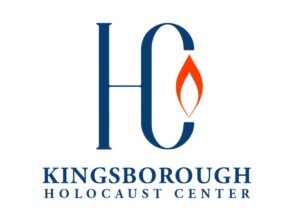Pennsylvania. Members of a white nationalist organization, most of them armed, march through the streets of a central Pennsylvania city, screaming anti-gay, antisemitic, and anti-Black invective.
Photo and caption by Anthony Karen, all rights reserved.

Tennessee. A moment of prayer. The prayer was led by an Imperial Kludd (chaplain) of a Tennessee-based Klan realm.
Photo and caption by Anthony Karen, all rights reserved.

Arizona. Max Resist, a popular band with white nationalists, performs “I Hope Your Baby’s White” during an annual white unity weekend.
Photo and caption by Anthony Karen, all rights reserved.
Georgia. The now disbanded Georgia Knight Riders, along with several other Klan organizations, during a public demonstration against illegal immigration.
Photo and caption by Anthony Karen, all rights reserved.

Missouri. A traditional Ku Klux Klan wedding ceremony. The wedding ritual is taken from the Kloran, a handbook for the Ku Klux Klan first written by William J. Simmons in 1915. The book contains sections on ranks within the organization, the “naturalization” ritual, and the protocol for opening and closing ceremonies.
Photo and caption by Anthony Karen, all rights reserved.
Community and Culture
To fully grasp the appeal of white supremacist organizations, it is important to highlight their social and civic aspects. Aside from political actions, social gatherings − including church services, weddings, funerals, barbeques, music shows, holiday celebrations, and carnivals − have been a central feature of the white supremacist movement. These events connect individuals to the movement and foster a sense of community.
In his book, Klanville, U.S.A: The Rise and Fall of the Civil Rights-Era Ku Klux Klan, David Cunningham offers a detailed description of the Klan community in the 1960s that remains accurate today for many white supremacist organizations. He writes that members typically attended weekly meetings and assisted with rallies or other Klan events in the county. These events, in effect, affirmed members’ solidarity with the Klan world and rejected the compromised character of other groups. If a personal tragedy befell a member, the local Klan newsletter issued pleas for assistance. Families of deceased members could hold a Klan funeral ceremony, as outlined in the official Klan funeral service handbook. At Klan weddings, the bride and groom wore their robes and were married by their own Klan chaplain. Local Klan campaigns collected used toys and clothes, which female members cleaned, mended, and delivered to needy families. Klan-owned businesses offered members discounts on items and services, and members tried to spend money in their own community. Klaverns hosted regular social events, including turkey shoots, fish fries, family lunches, dances, and holiday parties. Klan rallies − open to the public − resembled county fairs, complete with live music, concessions, souvenirs, raffles, and games for adults and children.
According to Kathleen Blee, not much has changed since the 1960s. At contemporary racist rallies, visitors can buy racist children’s books, t-shirts, key rings, and bumper stickers. There are sessions on self-help for addicts, games of volleyball, and hymn singing. Local organizations also arrange pancake breakfasts, spaghetti dinners, and social hours. Blee observes that because of their emphasis on community, family, social ties, and civic duties, much about racist groups appears disturbingly ordinary, which, in turn, strengthens them: “By combining the aberrant with the ordinary, the peculiar with the prosaic, modern racist groups gain strength. To design effective strategies to combat racist groups, we must understand this combination.”
Next category: “Symbols and Rituals”.
Katleen Belew, Bring the War Home: The White Power Movement and Paramilitary America (Cambridge: Harvard University Press, 2018).
Kathleen Blee, Inside Organized Racism: Women in the Hate Movement (Berkeley: University of California Press, 2002).
David Cunningham, Klansville, U.S.A: The Rise and Fall of the Civil Rights-Era Ku Klux Klan (New York: Oxford University Press, 2013).
Linda Gordon, The Second Coming of the KKK: The Ku Klux Klan of the 1920s and the American Political Tradition (New York: Liveright, 2018).
Kendrick Oliver. “‘Post-Industrial Society’ and the Psychology of the American Far Right, 1950-74,” Journal of Contemporary History, vol. 34, no. 4 (1999), pp. 601–18.





